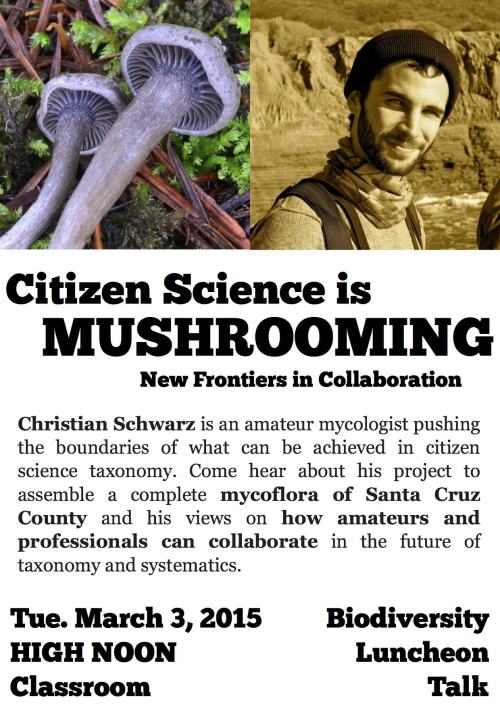Notes of a Mycophile has moved!
New Year’s Tidings
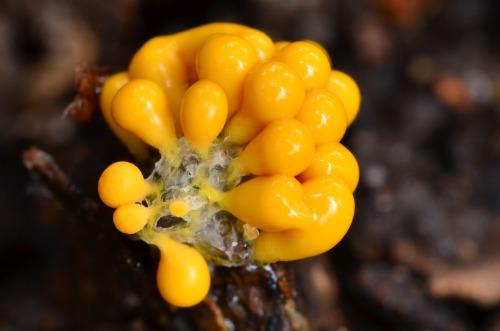
Leocarpus fragilis - a slime mold…
Hello, dearest! Forgive my tardiness. The New Year came and went, and I was stuck in Chinatown examining dried stinkhorns, pre-Fukushima Icelandic Kelp, and dodging firecrackers. January? Oh. I must have missed the dawning of that New Year as well.
(Door closes. Suitcases are placed at the door. Tie is loosened, buttons undone. Kisses are exchanged, followed by a warm but tentative embrace. There is a short but intense moment of eye contact. It is implied that all will be explained in due time.)
Yes indeed, there’s a tremendous amount we must catch up on. Just a tremendous amount. Where to begin… Pour me some scotch, will you? Neat, please. Join me, will you?
(glasses clink, small sips)
Ahhh… yes.. That settles me in. I’m sure you’ve noticed that mushroom season is nearly over, my dear. The El Niño was strong, but the rains came late and although heavy at times, they amount to a relief at best. Fungi did fruit in Santa Cruz, and some fruited well.
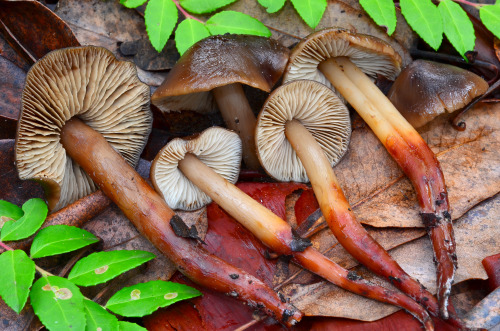
^ Phaeocollybia were seen in Santa Cruz (there are very few documented records of this genus here).
But salvation seems to elude us. Temperatures across this great Golden State have been 10-20 F above average for February. God help us.
(large sips)
Alright, alright. Here’s the long and short of it: Mushrooms of the Redwood Coast is now entirely out of our hands. Noah Siegel and I have turned in the so-called “second pages”, which means that the book goes to print soon. Yes, thank you, cheers! Soon this Six-Year task will be behind us. Many peaks on the horizon beckon.
(glasses clink, “sips” involving serious liquid volume)

^ Shaking off the pall cast by 5 years of book writing about one of the least-well-known eukaryotic groups in the United States…
What else? The Redwood Coast Naturalists mushroom identification courses are done for the season; having fit two beginner’s sessions as well as one intermediate session under my belt. I had an outstanding experience. Who knew there were so many lovely people in this world? See below.

Our Santa Cruz Mycoflora Project made the NPR airwaves. Yes, you can hear the article still. The Fungus Federation renewed their material support for our endeavors. The Norris Center at UC Santa Cruz provides a roof, shelves, and good company. A major grant application is underway. Life is good. The future is bright.
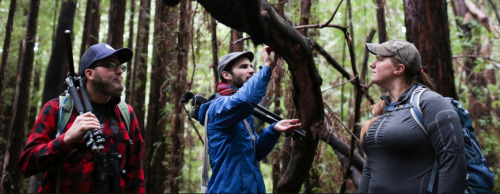
^ Santa Cruz Mycoflora data-gatherers
But there is much to catch you up on that has more to do with the world at large; let us not be provincial.
I have tales to tell you:
- Unknown Objects of Extraterrestrial Origin.
- I shall be attending a meeting regarding the Fate of Threatened and Endangered Fungi.
- Small Worlds
- Fungal Extremity and Exceptionality
But first… I must tell you more about where I have been. It was promised to you and now you must have it. The eastern hemisphere. The southern (!) hemisphere. Mainland Malaysia. Borneo. Sulawesi. Bali. Java. In that order, I shall begin next week to cover my times and travels. These places… the creatures… the people… they all left a strong impression on my mind and my heart. To be sure, love, I am still coming to terms.
Cheers to that.
(glasses clink, sips taken, fire crackles to life)
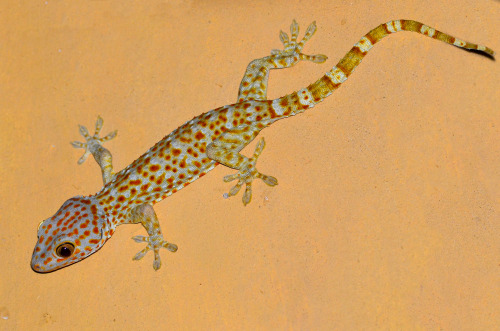
Gaze upon this Tokay Gecko (Gekko gecko). They say their names unnervingly while the world is asleep.
geezeroid asked: What is the status of North American herbaria making a database so that a researcher, mycologist (or anyone) can type in a species and find where collections of that species are housed?
Check out www.mycoportal.org!
fungiaustralis asked: Do you know of any mushroom cataloging groups in Australia?
Yes, fungimap.org!
Return, Confession

Can you blame me for being unable to resist the allure of this moth?
*Door closes*. I’m home. I know my hair is tousled, my backpack is splitting at the seams, I have lipstick and Lepidopteran-scales on my shirt collar. But the wait is over. I’ve been unjustifiably silent. My bravado about long silences in the last post was just that - bravado. I missed you. You missed me. Tears were shed. Beds went cold.
Allow me to attempt a rekindling of the flame. What better way than a baring of the soul? A confession? Here goes: …I’m seeing other organisms.
I know, I know! You came here for fungi. But as I intimated long ago, there’s a whole world of creatures out there, and I Iove (almost) all of them. As I get older, my perspective be steady broadenin’. Birds, nudibranchs, marine mammals, fish… I can no longer pretend. I’m Biodiversiphilic.
If you hold my hand and keep in mind whatever it was you liked about me as the blogger you first met, I think we can get through this.
Here’s what I’ve been up to recently:
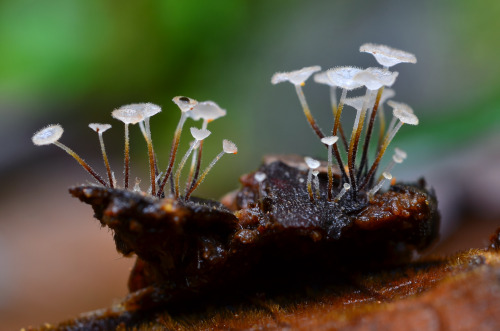
I went to Borneo. I found this ^ thing. I don’t know what it is (edit: Danny Newman and Jimmie Veitch suggested Gloiocephala; I think they are correct!). If you promise that you’ll stick with me while we work this out I will show you a bunch more pictures of stuff from Borneo. I will even tell you some naturalist pro-tips about what to do while you’re there. Pinky-swear.

This is an almost-unbelievably scenic coral-reef tableau. I know this might be hard for you to hear, but I spent a fair amount of time underwater this summer. There was just so much to see. It’s beautiful down there. I’ll tell you all about it. Just give me some time. Do you know about Kraits?

This is a Humpback Whale. It is leaving the ocean and being in the air. Given the number of tons that a Humpy weighs, this is an impressive feat. To be perfectly honest, I’ve been spending a lot of time both under the salt water and on top of it. The Ocean is my mistress, and I am her adoring devotee.
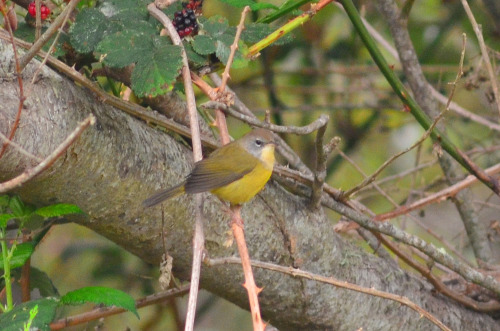
I’m a birder; you probably know this much. It hasn’t rained on the Central Coast of California in months, so I feel pretty comfortable saying that I wasn’t getting my needs met. I look at a lot of birds to fill that space. The one pictured above is a Geothlypis, and it makes a pretty convincing case for being a hybrid Common Yellowthroat x McGillivray’s Warbler hybrid. Is it actually? We will probably never know.
Please stay tuned. I’m branching out. I’m learning to love more.
And I’m teaching classes:
http://www.redwoodcoasttours.com/events/
Return from Diversions
I don’t expect my scribblings here were missed much, and an apology for my long hiatus and silence seems asinine anyway. Moving on.
Since Noah and I submitted our first draft of Mushrooms of the Redwood Coast to our publishers (!!!), I’ve kind of been on physical/mental vacation. My first sally was to Louisiana, where I saw many, many birds I’d never seen before, and even encountered a handful of mushrooms that I also had yet to experience in vivo.
Most notably, I encountered the glorious little Anthracophyllum lateritium, which encounter I was wholly unprepared for. The red gills that slowly turn charcoal-colored as they age and mustard-yellow caps are really unlike anything else in the United States.

Likewise, Louisiana is a Land of Lizards, and I was pleased to make the acquaintance of this hormonally-inflamed Green Anole (albeit a brownish one).
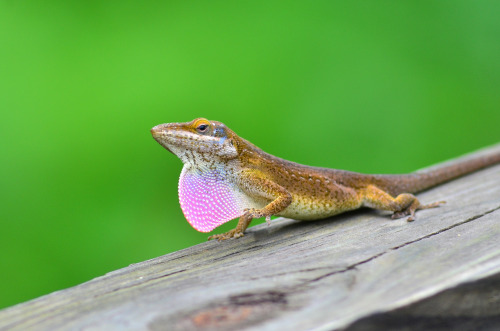
After a brief and rather bored return to my normal life in Santa Cruz, one of my esteemed Bigoteros rescued me (in the form of an escapist-style fugue) to the Mountains of Arizona.
We birded a lot. I encountered some very rare birds (from a UnitedStatesian perspective, anyway), as well as others not rare but nevertheless heretofore-unseen-by-me. Mushrooms were very scarce, since the monsoon rains that awaken these forests with mycological magic are still months away. However, we did have one encounter that tickled my ornitho-amygdala and fungal-cortex simultaneously:
While birding at Madera Canyon, we found this Elegant Trogon calling near its nest.
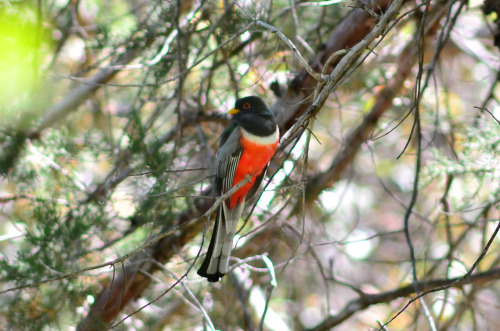
Like all trogons, this species nests in tree cavities (previously excavated by woodpeckers). I suspect that wood-decaying polypores play a role in ‘ripening’ (softening) the dead wood of snags that woodpeckers and other cavity-nesting birds depend on - evidence of such a relationship is perhaps present in the picture below, with a Phellinus fruiting abundantly above the Elegant Trogon’s nest hole.

Or perhaps it’s the reverse? Maybe the fungi infect the wound on the tree after the woodpecker has penetrated the protective outer bark? Either way, I bet that the interactions between birds and fungi in these temperate forests is not as peripheral as it might seem.
March 19th is Taxonomist Appreciation Day.
A Pseudo-Big Day in Santa Cruz
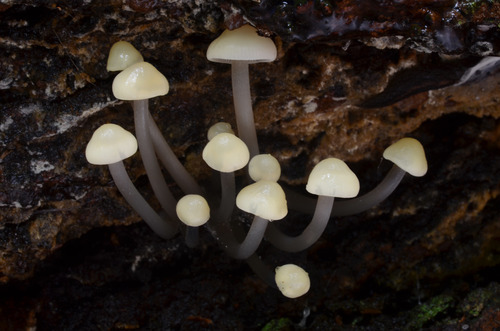
I have always wondered how many mushroom species it would be possible to see in one day in Santa Cruz County. Since this fall has been so exceptionally fruitful for mushrooms, I decided to give it a go… How else to find out?
I chose this time of the year because the fall mushroom assemblage is rapidly transitioning into the winter assemblage, briefly bumping up easily-seen diversity during the period of overlap. Since I didn’t have a full day to commit start to finish (Christmas parties, work, etc.), I had to spread out my efforts over four days. 5 hours were spent on the 18th, 2 hours cumulatively on the 19th and 20th, and 2 hours on the 21st (drive times included, without overlapping drive times removed). Totaled up, this roughly equals the amount of available daylight (plus maybe a little headlight hunting) that is usually available during this period of fall/winter overlap. I’m quite sure that all the mushrooms I encountered could have been found on either the 18th or the 21st. I ended up with 270 species (not all identified to species, but recognizable RTUs).
I think this is clear evidence that 300 species could be seen by one person in a single day during a good year in Santa Cruz County. I think it’s even feasible to get well over this number, keeping in mind:
1. Start with a prioritized list of expected species. I missed many common species.
2. Scout the week ahead of time to locate rarer taxa - I did no scouting.
3. Plan an efficient driving route. I made mine up as I went, and some driving time is double-counted in my 9 hours.
4. Learn to distinguish Mycena and other tough taxa by sight (at least with provisional names) - I put no real effort into distinguishing gray Mycenas and other difficult groups (Galerina, Leptonia), although I did so with Cortinarius.
5. Spend most of your time at a few high-productivity areas that are relatively close to one another but very different from one habitat-wise (minimizing drive time while maximizing species turnover between sites). Driving time was the single biggest detracting factor.
6. Go alone, and don’t photograph species for which a photo is not helpful in later distinction. I spent a lot of time photographing mushrooms and talking to my companions, which was very pleasant but didn’t serve this particular bizarre goal.
The areas I visited were: Ponderosa Lodge, Henry Cowell Redwoods State Park (near Graham Hill Road), Fall Creek Unit (near Empire Grade), UCSC (oaks northwest of the Arboretum), Big Basin State Park (visitor center area to Pine Mountain Trail and part of Skyline to the Sea), Pogonip, the San Lorenzo River corridor (including the Cemetery near Ocean Street Extension), and a few neighborhood spots including my yard.
Below is the list of mushrooms I encountered:
Agaricus albolutescens (prime fruiting at Henry Cowell)
** Agaricus fuscofibrillosus (first time I have seen it in the county, urban cypress)
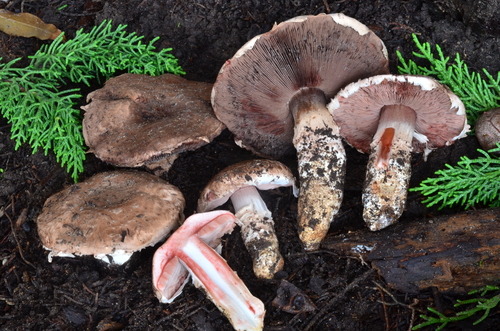
Agaricus hondensis
Agaricus micromegathus
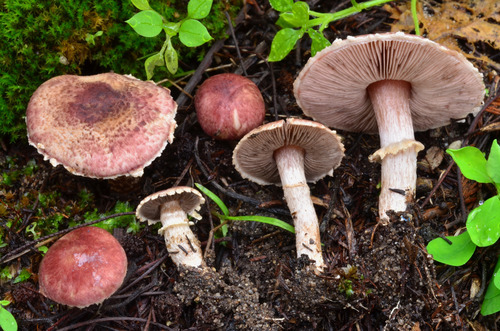
Agaricus praeclaresquamosus (new name pending)
Agaricus subrutilescens
Agaricus xanthodermus
Agrocybe pediades
Agrocybe praecox (only saw it in my front yard!)
Alboleptonia sericella
Amanita augusta
Amanita baccata (sandhills around Henry Cowell Observation Deck)
Amanita constricta
Amanita gemmata
Amanita muscaria
Amanita novinupta
Amanita pantherina group
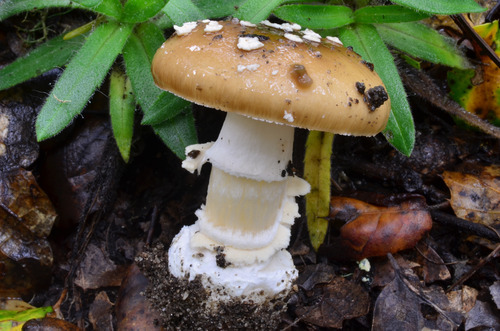
Amanita phalloides
Amanita silvicola
Annulohypoxylon thouarsianum
Antrodia madronae
Antrodia sp. (a small, large-pored species on SCZ Mtn. manzanita)
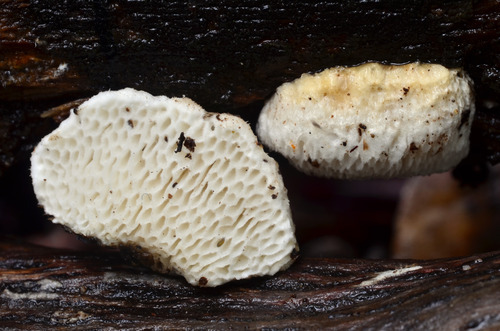
Armillaria mellea
Armillaria solidipes
Astraeus hygrometricus
Atheniella adonis
Auriscalpium vulgare
Bjerkandera adusta (one large fruiting in Pogonip near the Koi Pond)

Bolbitius titubans
Calocera cornea
Cantharellus californicus
Caulorhiza umbonata
Chalciporus piperatoides
Cheimonophyllum candidissimus
Chlorophyllum brunneum (many under Eucalyptus along San Lorenzo River)
Chroogomphus ochraceus
Claudopus sp. (on sand at Ponderosa Lodge)
Clavaria “blunt tips”
Clavaria falcata
** Clavaria flavipes - very rare, perhaps 4th North American collection? Big Basin.
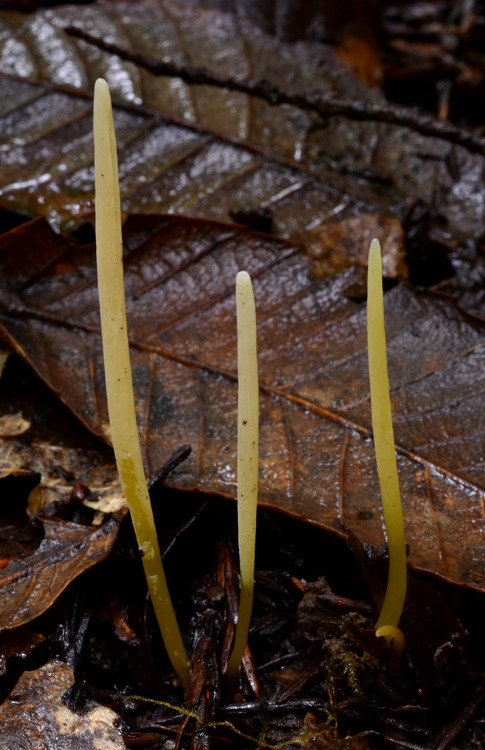
Clavaria vermicularis
Clavariadelphus occidentalis (small fruiting under Live Oak, Pogonip)
** Clavariadelphus cf. truncatus (rare for this area, Fall Creek)
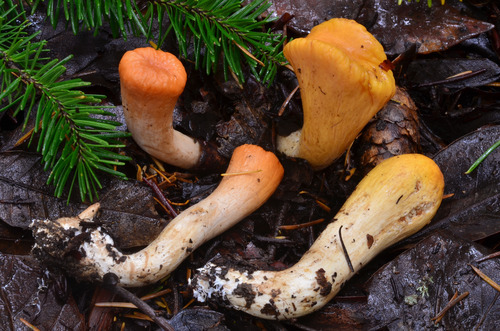
Clavulinopsis laeticolor
Clitocybe sp.
Clitocybe “shallow gills”
Clitocybe californiensis
Clitocybe fragrans
Clitocybe nebularis
Clitocybe nuda
Clitocybe odora
Clitocybe trulliformis
Clitocybula sp.
Clitopilus nitellinus
Coniophora olivacea
Coprinellus flocculosus
Coprinellus Section Micacei
Coprinopsis (fuzzy white on horse dung)
Coprinus comatus (one fruiting near Koi Pond, Pogonip)
Cortinarius (Section Anomali)
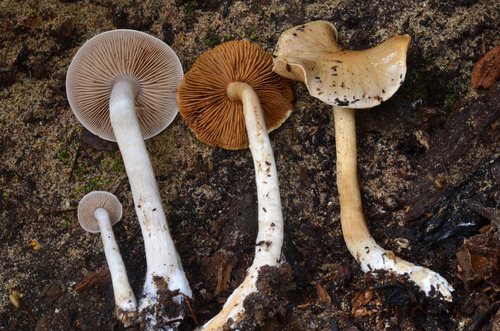
Cortinarius (subgenus Dermocybe)
Cortinarius (subgenus Myxacium)
Cortinarius (subgenus Telamonia) tawny
Cortinarius (subgenus Telamonia) 1
Cortinarius aff. obtusus
Cortinarius aff. laniger
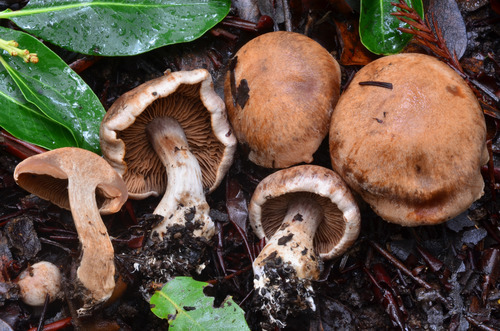
Cortinarius cisqhale
Cortinarius clandestinus
Cortinarius glaucopus
Cortinarius infractus
Cortinarius lilacinocolossus
Cortinarius ohlone
Cortinarius percomis
Cortinarius ponderosus
Cortinarius section Anomali
Cortinarius subgenus Myxacium (bluish-lilac)
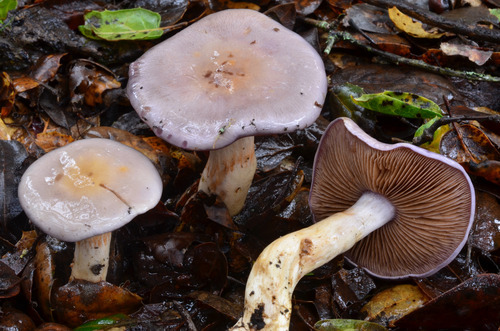
Cortinarius subgenus Phlegmacium (dull)
Cortinarius subgenus Phlegmacium (colorful)
Cortinarius subgenus Telamonia purple cap
Cortinarius subgenus Telamonia silvery
Cortinarius trivialis
Cortinarius viridirubescens
Cortinarius xanthodryophilus
Craterellus cornucopioides
Crepidotus mollis
Cuphophyllus fornicatus
Cuphophyllus graveolens
Cuphophyllus lawrencei
Dacrymyces palmatus
Dacrymyces stillatus
Dendrothele candida
Entoloma 1
Entoloma 2
Entoloma 3
Entoloma 4
Entoloma bloxami
Entoloma “conoradicatum”
Entoloma ferruginans
Entoloma subgenus Leptonia 1
Entoloma subgenus Leptonia 2
Entoloma subgenus Nolanea
Entoloma subsaundersi
Fomitopsis cajanderi
** Fomitopsis officinalis (large fruiting on Douglas-fir, Felton-Empire)
Fomitopsis pinicola
Galerina sp.
Galerina marginata
Ganoderma applanatum
Geastrum saccatum
Gliophorus minutulus
Gliophorus psittacinus
Gloeoporus dichrous
Gomphidius oregonensis
Gymnopilus sapineus
Gymnopilus (small bright conifer wood)
Gymnopus (large, madrone bark)
Gymnopus subpruinosus
Gymnopus villosipes
Hebeloma crustuliniforme
Helotiales (yellow disco swarm)
Helvella dryophila
Hemimycena 1
Hemimycena 2
Heterotextus alpinus
Hohenbuehelia grisea
Hydnum (rufescens type?)
Hygrocybe acutoconica
Hygrocybe aurantiosplendens
Hygrocybe coccinea
Hygrocybe singeri
Hygrophorus eburneus
Hygrophorus roseibrunneus
Hypholoma fasciculare
Hypocrea (yellow, on polypore)
Hypomyces microspermus group
Inocybe 1
Inocybe 2
Inocybe geophylla
Inocybe lilacina
Inocybe sororia
Jahnoporus hirtus
Laccaria amethysteo-occidentalis
Laccaria fraterna
Laccaria proxima
Lactarius “montanus”
Lactarius alnicola
Lactarius californiensis
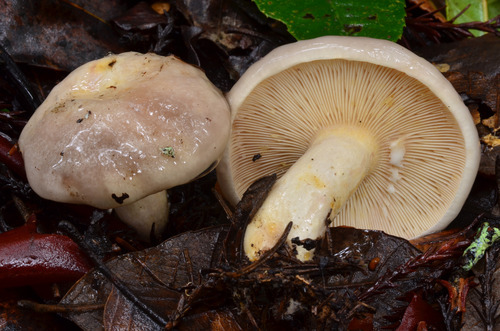
Lactarius deliciosus
Lactarius megacarpus
Lactarius pallidiolivaceus
Lactarius rubidus
Lactarius rubrilacteus
Lactarius rufulus
Lactarius substriatus
Lactarius subvillosus
Lactarius xanthogalactus
Laetiporus gilbertsonii
Lenzites betulina
Leotia lubrica (one fruitbody, Big Basin)
Lepiota 1
Lepiota atrodisca
Lepiota castanea
Lepiota castaneidisca
Lepiota magnispora
Lepiota spheniscispora (late-ish, Pogonip)
Leptonia decolorans
Leptonia formosa
Leptoporus sp.
Leratiomyces ceres
Leratiomyces percevallii
Leucopaxillus albissimus
Leucopaxillus gentianeus
Lichenomphalia umbellifera
Lycoperdon molle (oak, UCSC)
Lycoperdon perlatum
Lycoperdon umbrinum
Lyophyllum decastes
Lyophyllum semitale group (fairly abundant, Big Basin)
Marasmius calhouniae
Marasmius plicatulus
Marasmius quercophilus
Micromphale arbuticola
Mucronella flava
Mucronella fusiformis
Mucronella small white clustered
Mycena 1
Mycena acicula
Mycena aurantiomarginata
Mycena californiensis
Mycena epipterygia (uncommon here, one fruitbody, Big Basin)
Mycena galericulata
Mycena maculata
Mycena oregonensis
Mycena pura
Mycena purpureofusca
Nidula candida
Omphalotus olivascens
Onnia (triquetra?, one fruitbody, pine, Henry Cowell)
Paralepista flaccida
Paxillus “oak undescribed”
Peziza sp.
Phaeoclavulina myceliosa
Phaeolus schweinitzii
** Phallus hadriani (thanks to Linda Rosewood! San Lorenzo corridor)
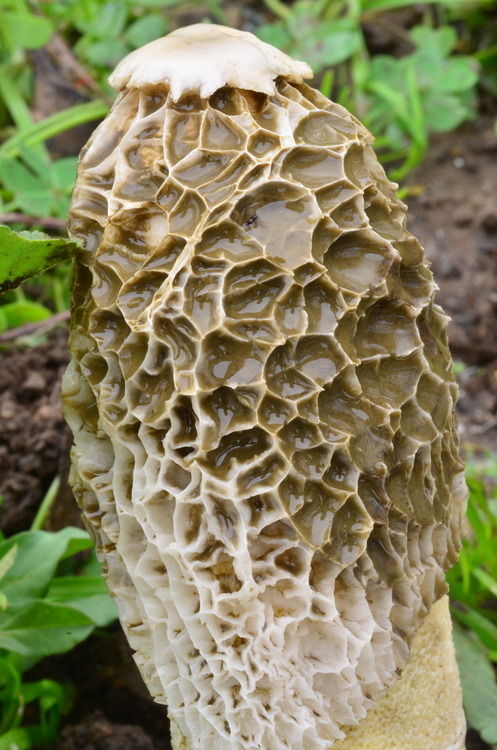
Phanerochaete sanguinea
Phellinus (oak)
Phellinus arctostaphyli
Phlebia radiata
Phlebia tremellosa
Phloeomana speirea
Pisolithus sp.
Pleurotus ostreatus
Pluteus cervinus group
Porodaedalea pini
** Postia caesia (uncommon here, Empire Grade, on Douglas fir)
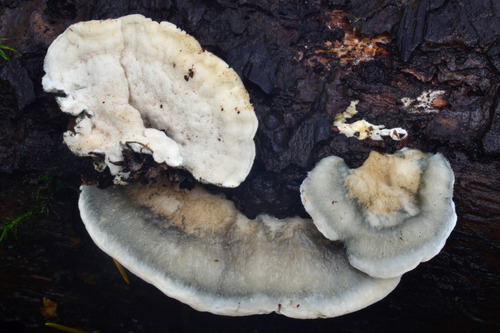
Psathyrella candolleana
Psathyrella piluliformis
Psathyrella uliginicola
Psatyhyrella sp.
Pseudobaeospora deckeri (Big Basin)
Pseudobaeospora stevensii (Big Basin)
Pseudohydnum gelatinosum (abundant, Big Basin)
“Purple Fuzz”

Ramaria sp.
** Ramaria apiculata - uncommon here (Big Basin)
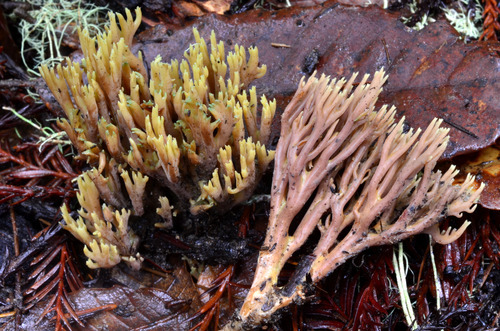
Ramaria formosa
Ramaria peach yellow
Ramaria “red”- (uncommon here, Fall Creek)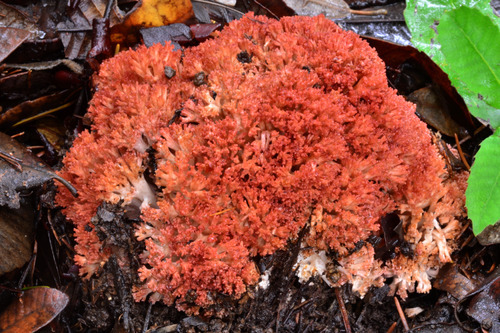
** Ramaria violaceibrunnea (uncommon here, Fall Creek & Big Basin)
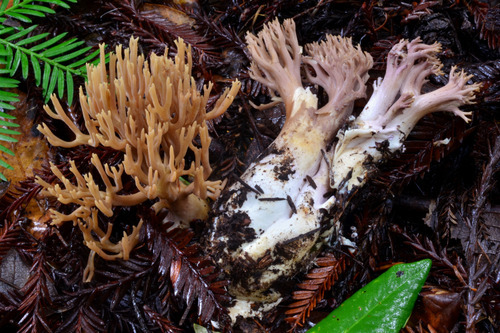
** Rhodocollybia oregonensis- (rare here, Big Basin, first county record?)
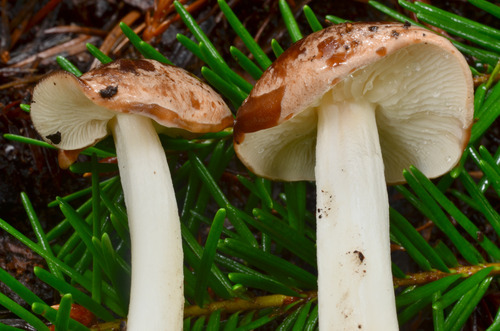
Rhodocybe “brown”
Rhodocybe caelata
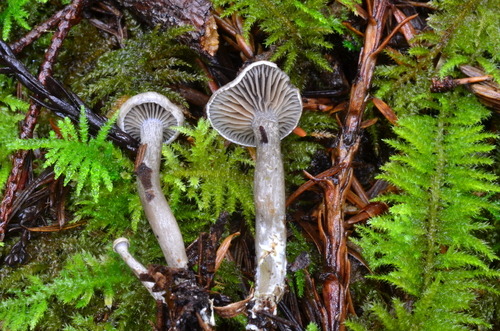
Rhodocybe nuciolens (two fruitbodies, redwoods at Pogonip)
Rhodophana nitellina
Roridomyces roridus (one fruitbody, Big Basin)
Russula 1
Russula 2
Russula brevipes
Russula cerolens
Russula cremoricolor
Russula cyanoxantha
Russula densifolia
Russula (greenish-brown-capped oak-associated cyanoxantha-type)
Russula murillii
Russula xerampelina
Schizophyllum commune
Simocybe centunculus
Sowerbyella rhenana (one fruiting, Ponderosa Lodge)
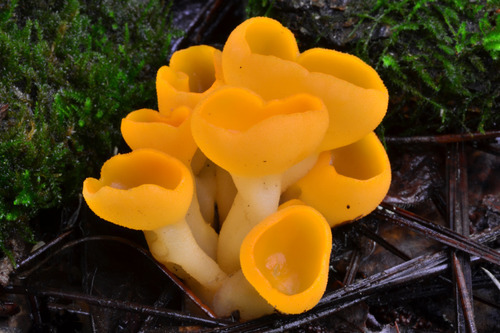
Stereum hirsutum
Stictis radiata
Suillellus amygdalinus (a few lateish fruitbodies at Pogonip)
Suillus caerulescens
Suillus fuscotomentosus
Suillus lakei
Trametes versicolor
Tremella aurantia
Tremellodendropsis tuberosa
Trichaptum abietinum
Trichoglossum hirsutum
** Tricholoma aurantia- (quite rare here, Fall Creek)
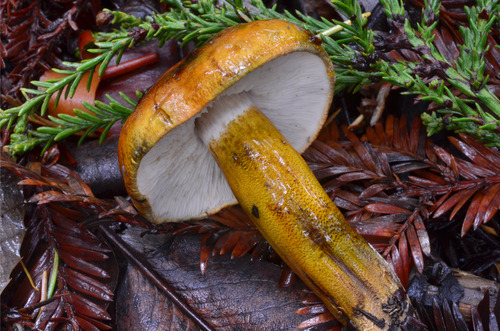
Tricholoma dryophilum
Tricholoma griseoviolaceum
Tricholoma pessundatum (a few fruitbodies with planted pine, Ocean Street cemetery)
Tricholoma saponaceum (both yellow form with pine and gray-white form with tanoak)
Tricholoma terreum
Tyromyces chioneus
Volvopluteus gloiocephalus
Xerocomellus truncatus
Xerocomellus zelleri
Xerocomus subtomentosus
Xylaria hypoxylon
El Niño Returns
The rains have returned in force to the California coast.
The people dance in the streets and in the forest, clothed and nude, ululating wildly with Joy. Some people have amplexus on the mind and are migrating in droves to their breeding pools… oh wait, those are newts.
Rot-Spirits populate the woods in tremendous quantities; their faces range from the familiar and friendly to the ghoulish and bizarre. Below are some portraits.
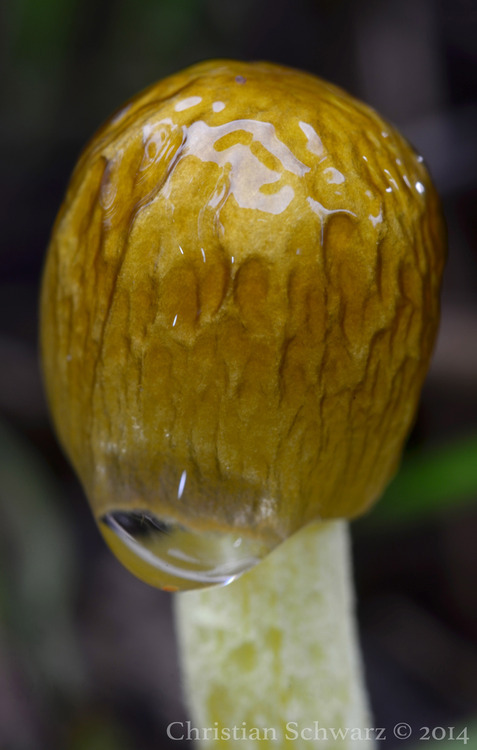
Bolbitius titubans - Patron Saint of Mucous and Being Small

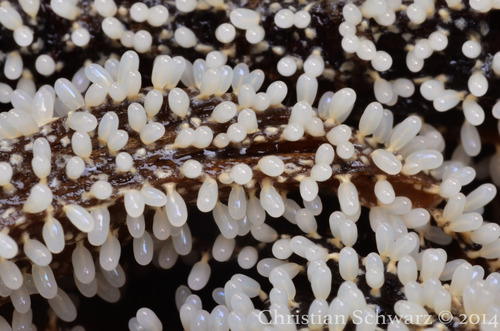
A Slime Mold/Patron Saint of Keeping Luke Warm on Hoth. I imagine this image will make some of you feel bad feelings.

